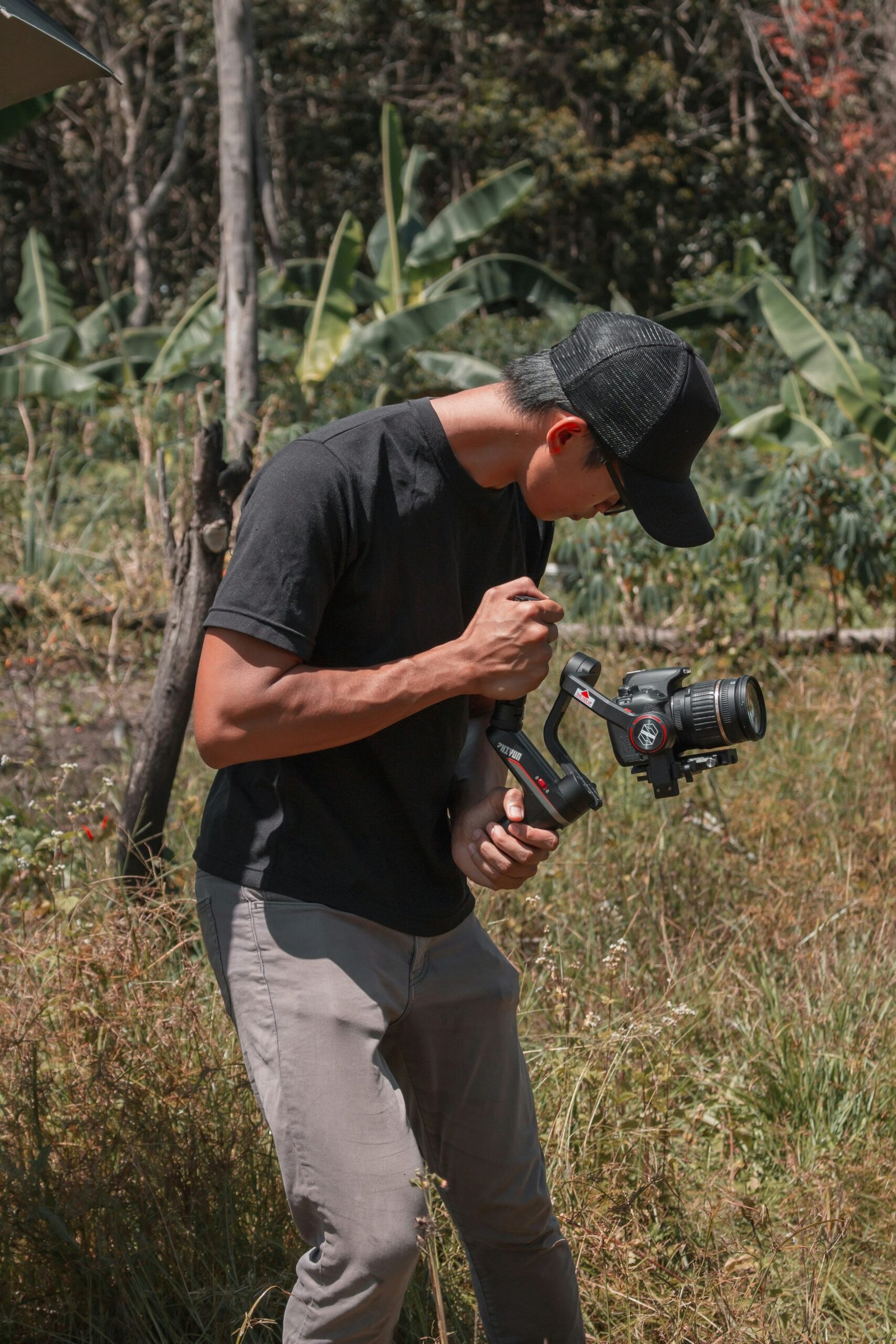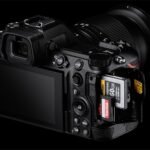Introduction to Politics and Photography
Photography, as an artistic medium, reflects not only the aesthetic vision of an individual photographer but also the broader socio-political context in which that work is produced. The relationship between politics and photography is deeply intertwined, as political climates and decisions can shape the themes, narratives, and even the accessibility of photographic work. Photographers often find themselves navigating a landscape influenced by legislative measures, governmental policies, and public sentiment, all of which can have a significant impact on their creative expression.
The political context can dictate the legal frameworks within which photographers operate, particularly regarding copyright, censorship, and accessibility to subjects. For instance, a regime that imposes strict censorship may limit the subjects that photographers can explore, thereby stifling creativity and reducing the diversity of visual stories told. Conversely, a more liberal political climate might encourage a flourishing of diverse voices and perspectives in the field of photography. The interplay of policy and art underscores how photographers can be both observers and participants in the political dialogues of their time.
Moreover, shifts in political climates may lead to trends in photography that reflect societal concerns. For example, during times of social unrest or significant political change, there is often a surge in documentary photography that aims to capture the essence of the moment. These trends can influence everything from the subject matter chosen by photographers to the way images are distributed and consumed by the public. Understanding the nuances of this relationship helps contextualize the current slowdown within the photography industry, providing a lens through which we can analyze the various factors at play. As we delve further into the intricacies of this relationship, we gain insight into how the photography landscape is not just about the art itself but is profoundly shaped by the politics surrounding it.
Historical Perspectives: Politics and Art
Throughout history, the intricate relationship between politics and art has profoundly shaped the landscape of various artistic expressions, including photography. Political events and regimes have often dictated not only what kind of art is produced but also whose stories are told through these mediums. For instance, during the early 20th century, the rise of totalitarian regimes in Europe led to severe censorship and the imposition of artistic norms that aligned with state ideologies. In Nazi Germany, photographers were encouraged to create works that glorified the Aryan ideal while suppressing any dissenting artistic expressions. This suppression stifled creativity and limited accessibility to a diverse range of photographic narratives.
Another significant example can be found in Soviet Russia, where photography was used as a tool for propaganda. The state sanctioned photographers who aligned their work with the regime’s objectives, often depicting joyous representations of labor and socialist ideals. Conversely, those who captured the struggles and realities of the average citizen faced censorship and persecution. Such political interventions did not merely hinder artistic freedom; they altered the very fabric of photographic history, emphasizing certain narratives while obscuring others.
The American civil rights movement of the 1960s offers another crucial example of the intersection between politics and photography. Photographers documenting the struggles for racial equality played a pivotal role in shaping public perception. The images captured during protests and demonstrations became powerful tools for activism, leading to greater awareness and catalyzing change. This historical perspective illuminates how political circumstances can elevate certain forms of artistic expression, while simultaneously restricting others.
The examples from history illustrate that the influence of politics on art, particularly photography, is profound and enduring. Understanding this dynamic provides essential context for comprehending the current state of the photography industry amidst ongoing political changes. The legacy of political intervention in artistic expression continues to resonate, informing the dialogue between artists and the socio-political climates in which they operate.
Current Political Climate’s Influence on Photography
The relationship between politics and the photography industry has become increasingly intricate, especially in light of the current political climate, both locally and globally. A delicate balance exists between creative expression and regulatory frameworks, with policies affecting photographers in various ways. In many regions, newly enacted legislation surrounding media expression can either empower or restrict the narratives that photographers are able to convey. Recent political events have highlighted the importance of image-making in shaping public opinion, emphasizing how governmental stances can create a trickle-down effect on artistic communities.
One significant aspect of this influence is the funding for creative projects, which often hinges on political priorities. Government grants for photographers and other artists can fluctuate significantly depending on the ruling party’s values and agendas. In times of political unrest or shifting administrations, funding for artistic endeavors may be jeopardized, leading to a slowdown in the production of innovative photography. This scarcity can stifle creativity and compel photographers to adapt to a changing landscape that may not always align with their artistic vision.
Additionally, political narratives often dictate the public’s engagement with photography. The way images are consumed and interpreted can shift dramatically based on the prevailing political discourse. For instance, during periods of social upheaval, images that document protest and dissent may gain prominence, while work that reflects more tranquil themes may struggle to find an audience. Overall, the collective impact of these dynamics contributes to the evolution of the photography industry, as artists must navigate a complex terrain of limitations and opportunities shaped by the political sphere.
Funding and Support: A Political Approach
The financial landscape of the photography industry is heavily influenced by political decisions that shape funding sources and support systems for artistic projects. Political priorities play a pivotal role in determining the availability of grants for photographers and the extent of public art initiatives. When political leadership favors economic policies that prioritize commercial development over artistic endeavors, the repercussions can significantly affect not only photographers but also the broader spectrum of the arts community.
For instance, during periods of economic downturn, government budgets often face scrutiny, leading to reduced allocations for the arts. Public funding is frequently reallocated to essential services, leaving photographers and artists without timely financial resources to support their creative pursuits. This results in a slowdown of artistic expression, as fewer projects are realized due to a lack of available funds. The decision to cut funding for the arts can discourage both emerging and established photographers, making it more challenging for them to showcase their work and contribute to cultural narratives.
Moreover, the availability of grants is often tied to political agendas, leading to disparities in funding across various artistic forms. Photographers may find that financial support is more readily available for projects that align with prevailing political ideologies or community initiatives. This favoritism can stifle diverse voices within the photography sector, as certain narratives receive more attention and funding, while others are neglected. As such, the political landscape has a direct correlation with the sustainability of photography as an art form. Consequently, the long-term impact of these funding decisions can lead to a homogenization of artistic expression, advocating for a need to address these disparities to foster a more equitable environment for photographers.
Censorship and Regulation in Photography
The interplay between politics and the photography industry is significantly influenced by governmental regulations and censorship, which can profoundly affect the creative landscape. In politically sensitive regions, the imposition of censorship can serve as a tool for controlling the narrative and suppressing dissent. Photographers often find themselves navigating a complex web of legal restrictions that can limit their ability to document societal issues, express viewpoints, or showcase their artistic vision. This can lead to a homogenization of photographic works, reducing the diversity that is vital for the growth and evolution of this art form.
Moreover, regulatory measures may extend beyond mere censorship and encompass licensing requirements, restrictions on certain topics, or the need for government approval before displaying one’s work publicly. Such regulations can impose significant burdens on photographers, particularly independent creators who lack the resources to comply with stringent rules. The fear of potential legal ramifications can stifle creativity and deter photographers from exploring politically charged themes, which are often crucial for raising awareness and prompting social change.
The impact of these restrictions is twofold: not only do they inhibit individual expression, but they also limit audiences’ access to a diverse range of perspectives. When governments impose strict controls on photography, they risk creating an environment where only a narrow viewpoint is represented, undermining the critical role that photography plays in documenting truth and culture. As a result, the photography industry may experience a slowdown, as artists are forced either to alter their subject matter or avoid particular themes altogether. This erosion of creative freedoms serves as a stark reminder of the potent influence that political dynamics can exert on the arts, revealing the delicate balance between freedom of expression and regulatory oversight in the realm of photography.
Emerging Technologies and Political Influence
The landscape of the photography industry has been significantly shaped by emerging technologies, many of which have been driven or impeded by political influences. Social media platforms, innovative camera equipment, and advanced editing software have transformed the way photographers create, share, and engage with their audiences. However, these advancements do not exist in a vacuum; they are often affected by government regulations, censorship policies, and broader political agendas. These factors can either foster growth in the sector or constrain its potential.
For instance, the rise of social media as a tool for photographers has allowed for unprecedented levels of sharing and collaboration. Photographers can now showcase their work globally, gaining recognition and building networks that would have been unthinkable just a few decades ago. However, political influence can regulate what can be shared on these platforms. Censorship laws that limit artistic expression can silence voices and restrict the dissemination of certain types of content, which is particularly significant in politically sensitive regions. These regulations often lead to artists navigating a complex landscape, balancing their commitment to their craft with the constraints imposed upon them by governmental entities.
Moreover, the availability and development of new technologies such as artificial intelligence and virtual reality pose both opportunities and challenges. Political discourse surrounding privacy and data protection can directly influence the pace at which these technologies can be integrated into the photography industry. Regulatory frameworks can either encourage innovation by creating a safe environment for experimentation or create barriers that stifle creativity and technological exploration. Therefore, the impact of politics on emerging technologies extends to both their evolution and the ways in which photographers are able to use them effectively.
The Photographer’s Response to Political Changes
In the ever-evolving sphere of photography, the influence of political changes has become increasingly significant. Photographers often find themselves navigating a complex landscape shaped by political events and societal shifts. As these developments unfold, the photography community has demonstrated remarkable resilience and adaptability in their artistic practices, often responding to political challenges through their work. This response manifests in various ways, including alterations in style, themes, and overall creative approaches.
One of the most direct responses to political adversity is a shift in subject matter. Photographers frequently harness their medium to address social issues, document turning points, and highlight injustices. This results in a noticeable increase in political themes within contemporary photography, as artists utilize their visual storytelling abilities to advocate for change and to raise awareness about critical issues. For instance, documentary photography can serve as a powerful tool for social commentary, capturing moments that demand public attention and commentary. As photographers engage with their surroundings, their work often reflects the zeitgeist, providing insight into the political climate of their times.
Additionally, the political environment can inspire new styles and techniques among photographers. In response to challenges, such as censorship or societal unrest, artists may explore alternative formats or innovative technologies to convey their messages effectively. The creative process is thus enriched by the need to adapt, pushing photographers to rethink their methodologies and approaches. As a result, a diverse range of expressions and narratives emerge within the industry, showcasing the depth of the photographic medium and its ability to reflect the complexities of contemporary life.
In conclusion, the interplay between politics and photography has resulted in a dynamic response from photographers, who have adapted their styles and themes in accordance with the changing landscape. By using their art to engage with political challenges, photographers not only document history but also contribute to the ongoing discourse surrounding societal issues.
Case Studies: Photographers Impacted by Politics
Throughout history, various political climates have significantly influenced the work and livelihood of photographers. One notable case is that of photojournalist Shahidul Alam, from Bangladesh, whose poignant images captured the essence of political unrest during the 2018 student protests. Alam was arrested under allegations that included spreading misinformation. His case brought global attention to the challenges photographers face when documenting socio-political movements, illuminating the risks associated with capturing powerful images in a politically volatile environment.
Another case study is the Spanish photographer Manuel Vazquez, who specializes in documenting the impacts of immigration policies on communities. Following changes in legislation that intensified border control in Europe, Vazquez’s work became increasingly contentious. The resulting shift in public discourse led to polarizing opinions on his photographic exhibitions. While some hailed his work as essential for understanding the complexities of immigration, others perceived it as provocative, showcasing how political narratives can influence the reception and interpretation of photographic work.
The renowned collective, VII Photo Agency, represents numerous photographers working in politically charged environments around the globe. They provide an avenue for photographers to share their experiences and narratives, often unified by the overarching themes of conflict and resistance. However, the shifting political landscape, particularly in regions facing war or authoritarian governance, has forced many of its members to adapt their methodologies. Some have turned toward more intimate storytelling, focusing on personal experiences rather than broader political analysis. This evolution highlights the resilience and adaptability of photographers, illustrating how the industry can be significantly transformed by political dynamics.
These case studies underscore a crucial understanding: the intersection of politics and photography is not merely about the images captured; it encompasses the lived experiences of those behind the lens. As political environments continue to fluctuate, the photography industry will endure evolving challenges and opportunities, ultimately reflecting the broader societal changes at play.
Conclusion: The Future of Photography in a Political Landscape
The interaction between politics and the photography industry is complex and multifaceted. As discussed, the ongoing political climate significantly influences the creative landscape, shaping not only the subject matter photographers choose to engage with but also the avenues available for their work to be seen and appreciated. Acknowledging these impacts is crucial for understanding the future trajectory of the industry.
Looking ahead, it is essential for photographers to adapt to this political environment. Resilience strategies may involve diversifying portfolios, exploring new themes, and utilizing digital platforms to reach broader audiences. Establishing an online presence can mitigate the effects of traditional media limitations, providing a space for diverse narratives to flourish outside potentially restrictive political contexts.
Furthermore, advocates for artistic freedom play a critical role in shaping the future of photography. Engaging in dialogue with policymakers and participating in collective efforts can help promote an understanding of the importance of photography as a medium of expression. Photographers are encouraged to unite, forming coalitions aimed at defending their rights to create and distribute their work without fear of censorship or repercussion.
Thus, while the political landscape poses challenges, it also presents opportunities for photographers to explore innovative pathways and advocate for their artistic freedoms. Through heightened awareness and a proactive approach, the photography industry can navigate these complexities, ensuring that creative expression continues to thrive despite the backdrop of political turmoil. As we look to the future, the ability of photographers to respond to these challenges will be instrumental in shaping the essence and visibility of their craft.




